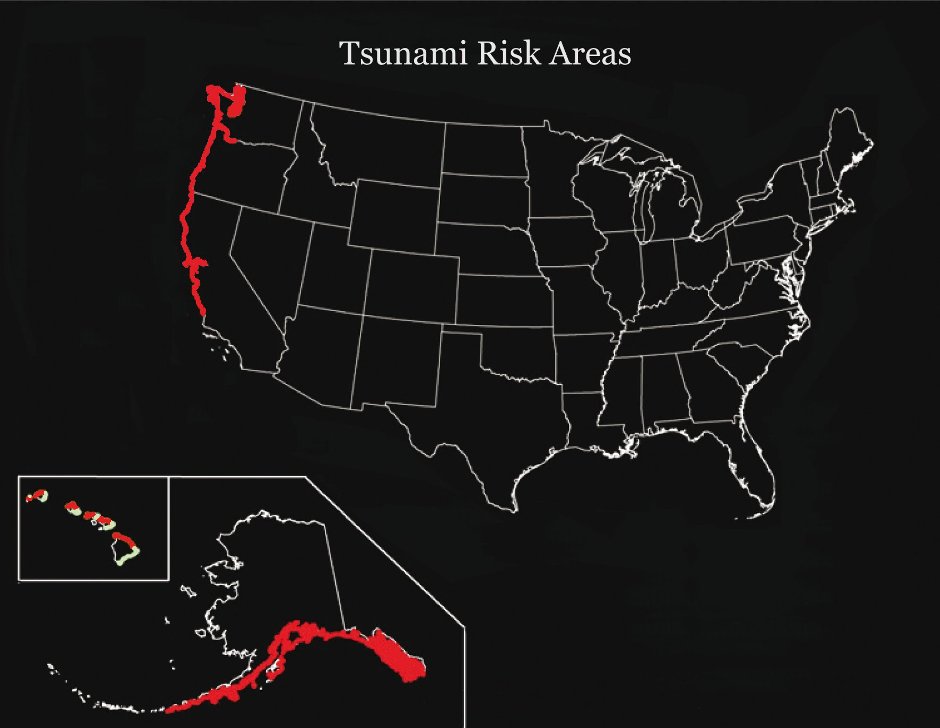Tsunamis, also known as seismic sea waves, are a series of enormous waves created by an underwater disturbance such as an earthquake, landslide, volcanic eruption, or meteorite. A tsunami can move hundreds of miles per hour in the open ocean and smash into land with waves as high as 100 feet or more. Once the wave approaches the shore, it builds in height. The topography of the coastline and the ocean floor will influence the size of the wave. There may be more than one wave and the succeeding one may be larger than the one before. That is why a small tsunami at one beach can be a giant wave a few miles away.
Except for the largest tsunamis, most tsunamis do not result in giant breaking waves. Rather, they come in much like very strong and fast-moving tides (i.e., strong surges and rapid changes in sea level).
Areas are at greater risk if they are less than 25 feet above sea level and within a mile of the shoreline. Drowning is the most common cause of death associated with a tsunami. Tsunami waves and the receding water are very destructive to structures in the run-up zone. Other hazards include flooding, contamination of drinking water, and fires from gas lines or ruptured tanks.
Terminology
- Advisory - An earthquake has occurred in the Pacific basin, which might generate a tsunami and produce strong currents or waves dangerous to those in or near the water.
- Watch - A tsunami was or may have been generated, but is at least two hours travel time to the area in watch status.
- Warning - A potential tsunami with significant widespread inundation is imminent or expected.
- Drawback - the first part of a tsunami to reach land is a trough called a drawback rather than a wave crest, the water along the shoreline recedes dramatically, exposing normally submerged areas.
- Run-up - When the crest of the wave hits, sea level rises (called run-up). Run-up is usually expressed in meters above normal high tide.

